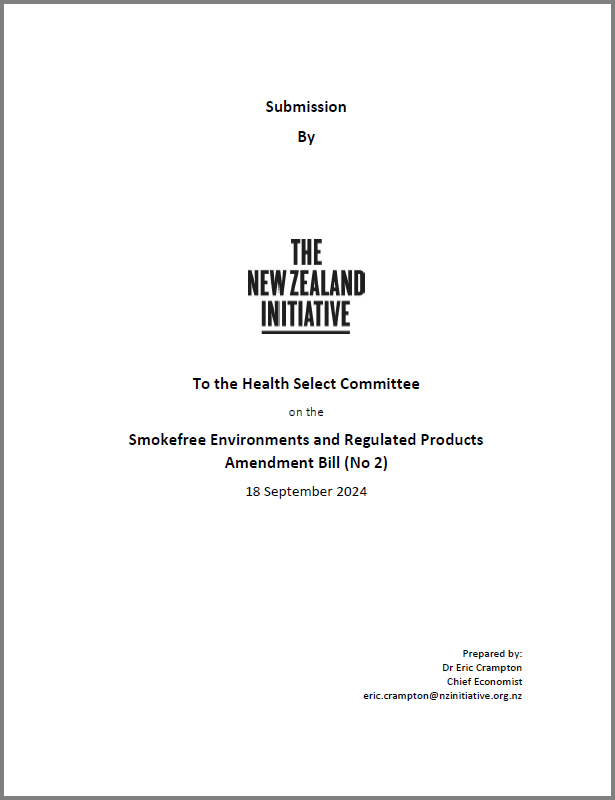1.1 This submission on the Smokefree Environments and Regulated Products Amendment Bill (No 2) is made by The New Zealand Initiative, a think tank supported primarily by chief executives of major New Zealand businesses. The Initiative undertakes research to contribute to the development of sound public policies in New Zealand to help create a competitive, open and dynamic economy and a free, prosperous, fair, and cohesive society.
1.2 The Initiative is funded by the subscription fees of its members. The Initiative’s membership spans the breadth of the New Zealand economy, from telecommunications and banking to construction, retail, and tertiary education. It also includes two tobacco companies. Its work remains independent; the breadth and diversity of our membership ensures we are not reliant on any one company or sector’s continued membership. Its members in the tobacco industry have not been provided an opportunity to provide feedback on this submission.
1.3 The Initiative has, over the past several years, undertaken research into tobacco harm reduction policies because of our concern for the inequities caused by the existing tobacco control regime. That research includes Smoke and Vapour: The changing world of tobacco harm reduction (2018) and The Health of the State (2016). We have maintained a watching brief in this policy area and regularly provide public commentary on policy developments. We submitted on the Smokefree Environments and Regulated Products (Vaping) Amendment Bill in April 2020, on vaping regulations in March 2021, on the Proposals for a Smokefree Aotearoa 2025 Action Plan, and on the Smokefree Environments and Regulated Products (Smoked Tobacco) Amendment Bill (2022). We have consistently supported measures enabling access to reduced-harm alternatives to smoked tobacco.
1.4 The Bill proposes to reduce youth vaping rates by prohibiting a broad set of vaping products used by both adults and youths, by increasing penalties for sales to minors, by restricting retail visibility of vaping products, and by further restricting areas where vaping retailers are allowed.
1.5 The ASH Year 10 survey shows regular vaping prevalence among youths rose sharply from 2015, peaking at just over 20% in 2020. Regular youth vaping rates declined to just over 16% by 2023, the most recent figures available. Daily youth vaping rates have been steady at 10% since 2021. Parliament is right to notice that there has been an increase in youth vaping rates. It should also note that youth vaping rates have stopped increasing and have started decreasing on some measures.1
1.6 If Parliament’s intention is to further reduce youth vaping rates, focusing on the ways that youths can be supplied with vapes seems appropriate.
1.7 The legislation proposes stepped-up enforcement of prohibitions on and penalties for the sale and supply of vaping products to youths. This measure is appropriately targeted. Social supply to youths in public places is currently prohibited. That prohibition on social supply could be extended to other places, taking the Sale and Supply of Alcohol Act as example framework.
1.8 Other measures proposed in the Bill are poorly considered and are best abandoned. Prohibition of vaping products used by adult ex-smokers is particularly likely to cause substantial harm. Concerningly, the Regulatory Impact Statement also repeatedly warns that such measures risk fuelling an illicit market like Australia’s.





